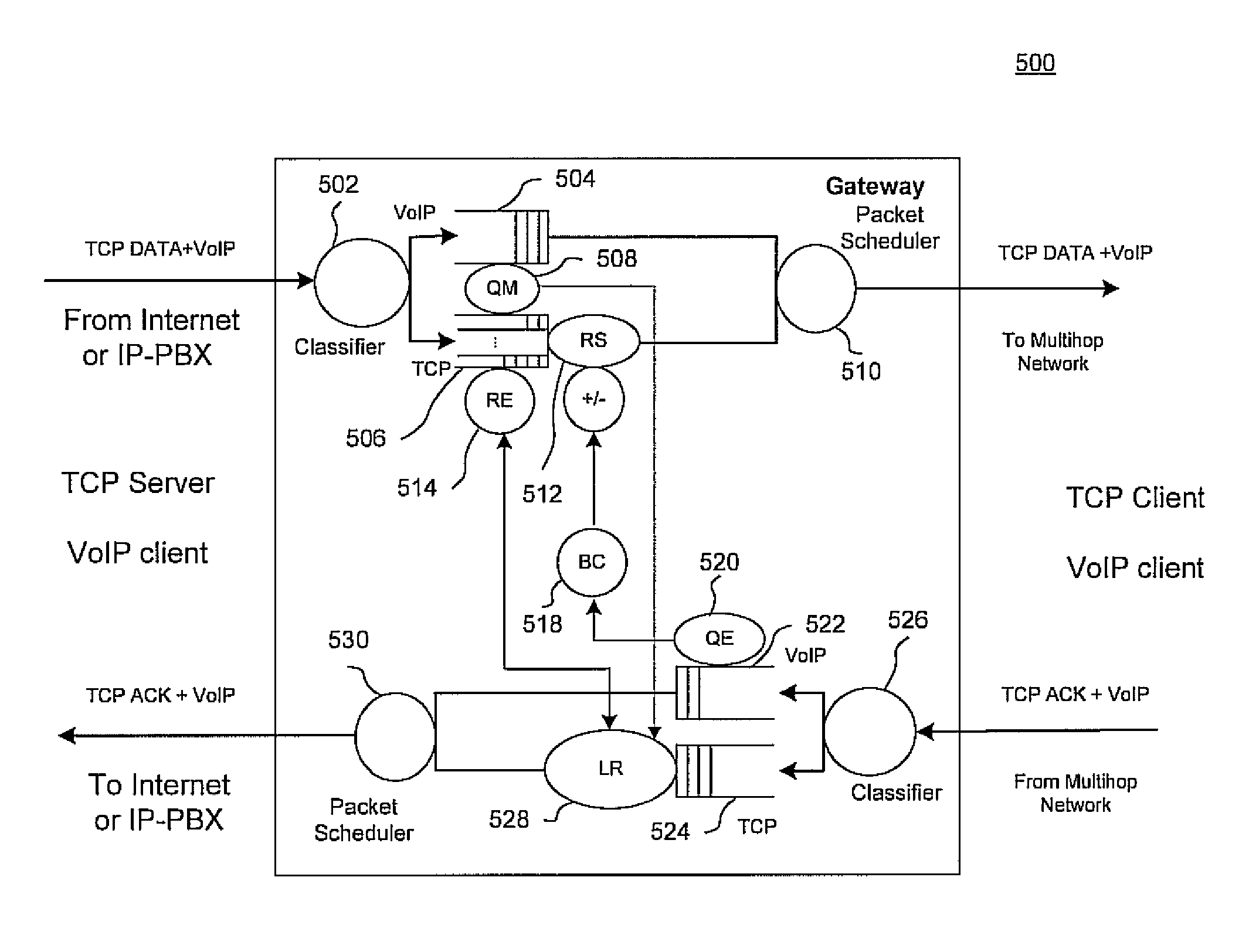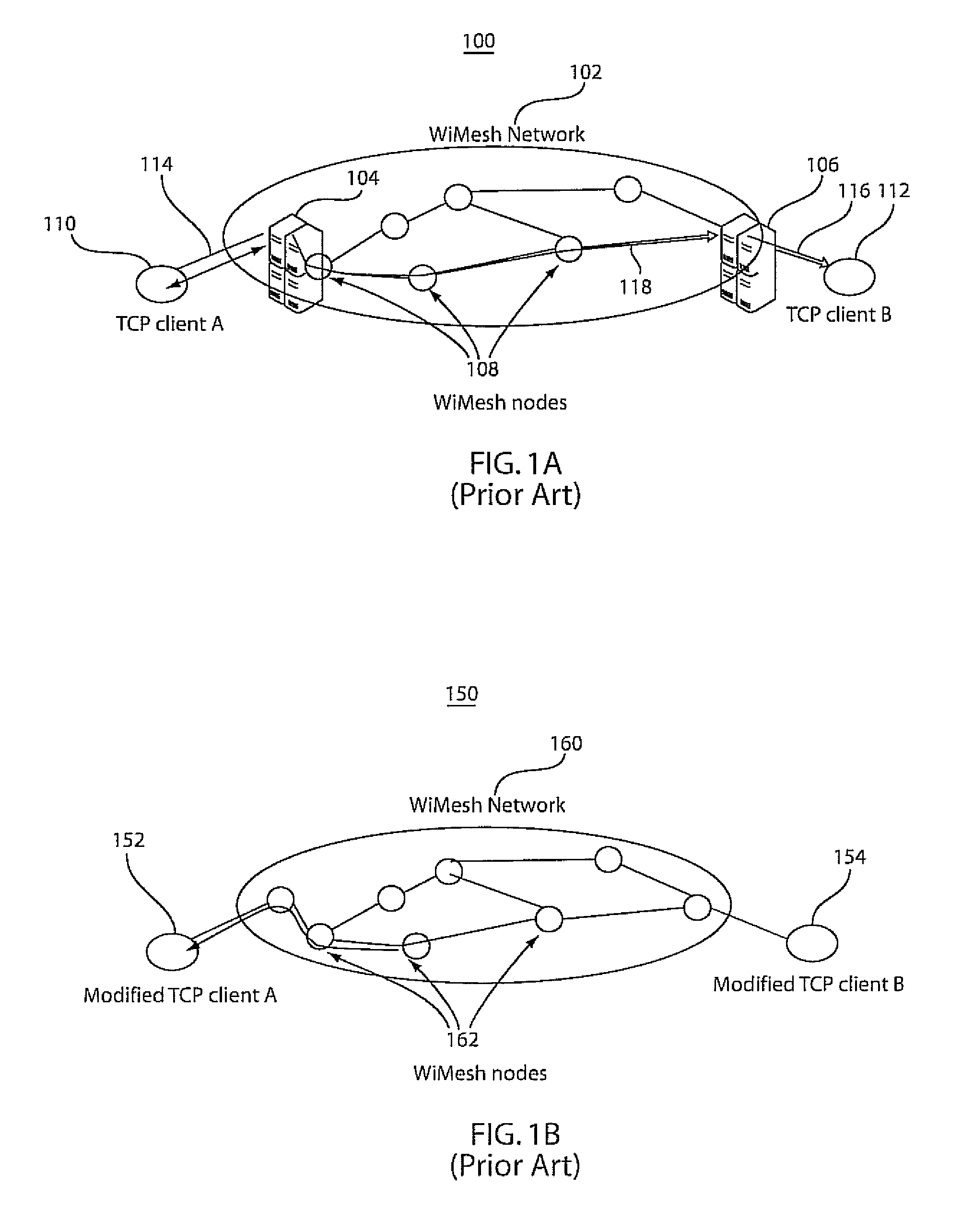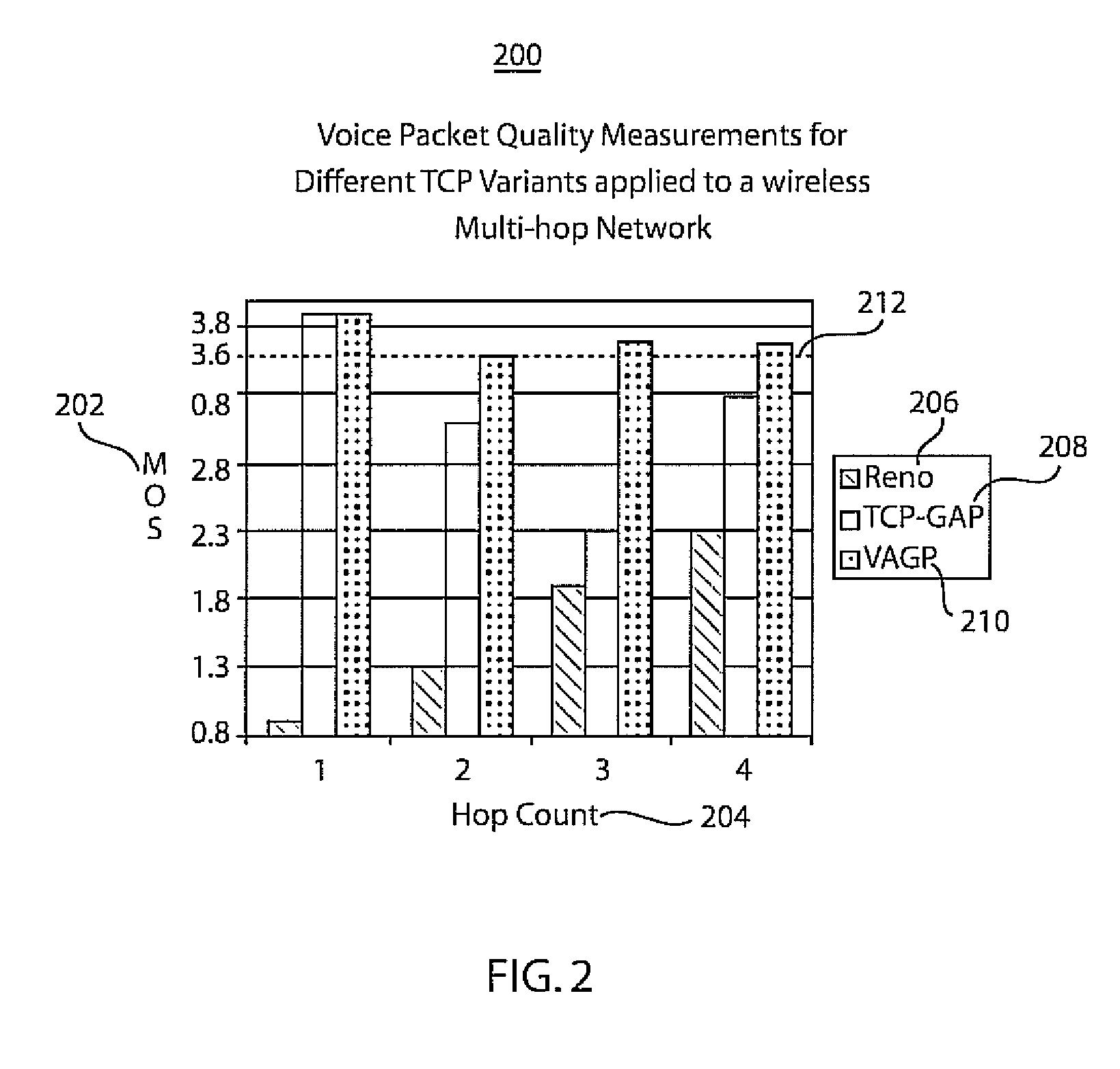Voice adaptive gateway pacing methods and systems for wireless multi-hop networks
a wireless multi-hop network and gateway technology, applied in the field of improving can solve the problems of insufficiently ensuring the quality of service requirements of voip traffic over wireless networks, and affecting the quality of voice and data communication traffic. , to achieve the effect of sufficient voip traffic quality and efficiently utilizing the remaining transmission capacity for data traffi
- Summary
- Abstract
- Description
- Claims
- Application Information
AI Technical Summary
Benefits of technology
Problems solved by technology
Method used
Image
Examples
Embodiment Construction
[0040]Although prior art methods for adapting TCP data traffic to wireless multi-hop networks, such as TCP-GAP, discussed above, may address some TCP performance issues, they fail to adequately protect the quality of voice packet traffic over wireless multi-hop networks through which TCP traffic is transmitted. For example, with reference to FIG. 2, a plot 200 illustrates the inadequacy of known TCP methods for transmitting voice packet traffic in the presence of data traffic on wireless multi-hop networks.
[0041]Plot 200 depicts voice quality measurements of voice packets transmitted with data traffic through a wireless multi-hop network utilizing TCP variants. TCP variants tested include Reno 206 and TCP-GAP 208, which are known variants, and an implementation of the present principles 210, referred to herein as a Voice Adaptive Gateway Pacer (VAGP) system and method. The voice quality measure employed is a mean opinion score (MOS), which is discussed in more detail below. The y-ax...
PUM
 Login to View More
Login to View More Abstract
Description
Claims
Application Information
 Login to View More
Login to View More - R&D
- Intellectual Property
- Life Sciences
- Materials
- Tech Scout
- Unparalleled Data Quality
- Higher Quality Content
- 60% Fewer Hallucinations
Browse by: Latest US Patents, China's latest patents, Technical Efficacy Thesaurus, Application Domain, Technology Topic, Popular Technical Reports.
© 2025 PatSnap. All rights reserved.Legal|Privacy policy|Modern Slavery Act Transparency Statement|Sitemap|About US| Contact US: help@patsnap.com



